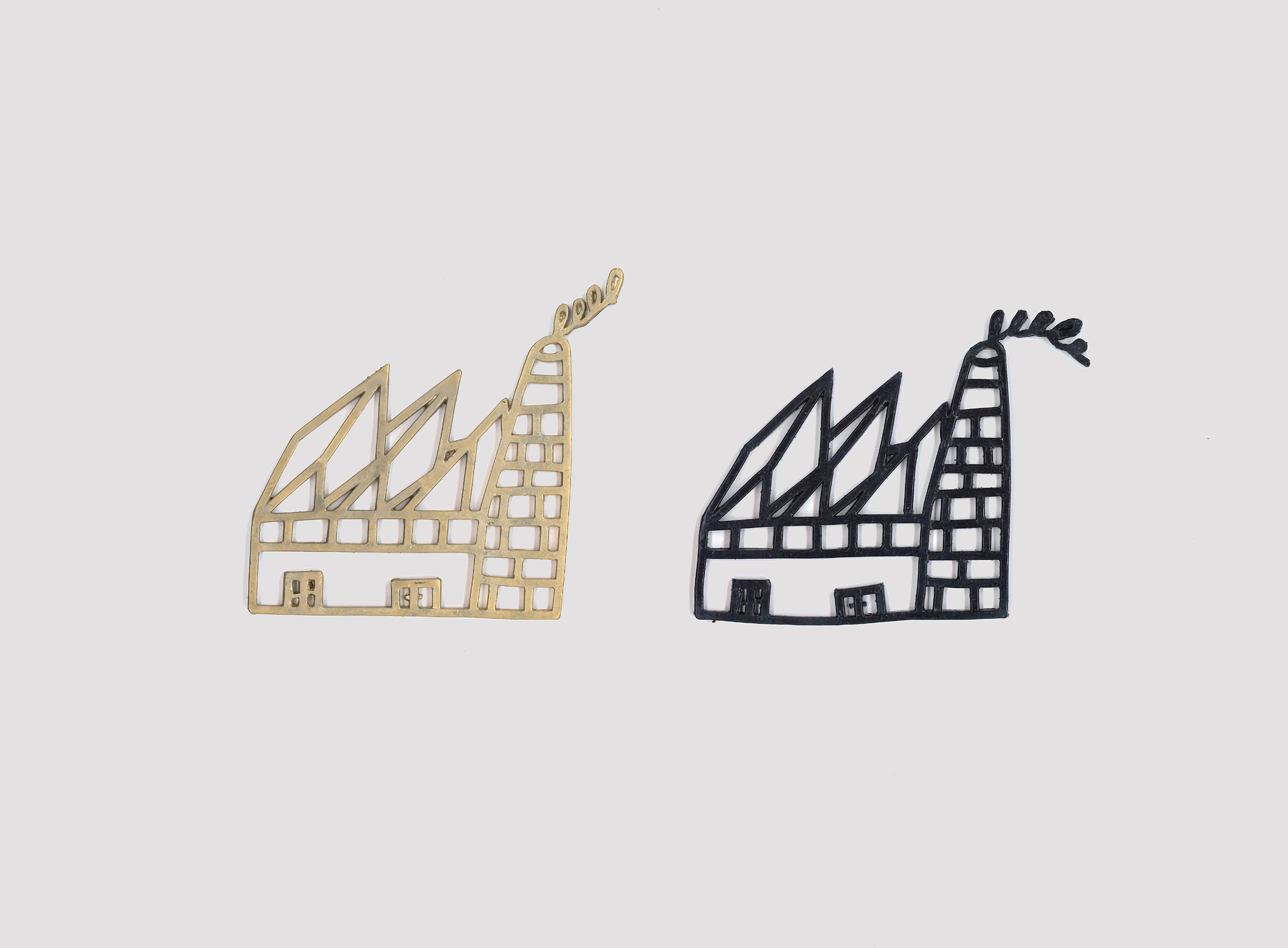Turin 1969
(Edition von 5)
Messing, Gummi) | 2017
Die Arbeitskraft des Südens, derer sich das Kapital bedienen wollte, um die Früchte der Entwicklung einzufahren, entpuppte sich in unerwarteter Weise als hartnäckiger Widerstand, der sein antagonistisches Verhalten direkt auf die materiellen Bedürfnisse gründete. Der unwissende und ungehobelte Arbeiter des Mezzogiorno stürzte die Kapitalstrategie der letzten fünfzig Jahre in die Krise: die Produktionsweise in der Fabrik, die auf dem Fließband und dem Massenarbeiter beruhte. Eine komplexe und bewährte Strategie, die sich bezahlt gemacht hatte und auf der auch die Arbeiterbewegung, die kommunistische Partei und die Gewerkschaften ihre Strategie aufgebaut hatten. Und die gleichzeitig in die Krise geriet. (Nanni Balestrini, „Wir wollen alles“)
Auf dem Cover des Buches hält ein Arbeiter die etwas kindliche Zeichnung einer Fabrik hoch. Hier manifestiert sich die Hoffnung auf ein besseres Leben von Arbeitsmigrant_innen, die vom Süden Italiens in den Norden ziehen – und die anschließende Desillusionierung. Das glänzende Messing und das durchhängende Gummi greifen diesen Prozess bei den so genannten Gastarbeiter_innen auf, der auch in den Fabriken, Bergwerken und Krankenhäusern der BRD und DDR stattfand.
The workforce of the south, which capital wanted to use to reap the fruits of development, unexpectedly turned out to be obstinate resistance that based its antagonistic behavior on material needs. The ignorant and uncouth worker of the Mezzogiorno created a crisis for capital’s strategy of the past fifty years: the mode of production in the factory that is based on the assembly line and mass workers. A complex and proven strategy that had paid off and upon which the workers’ movement, the Communist Party and the unions had also built their strategy. And they were simultaneously plunged into a crisis. (Nanni Balestrini, “We Want Everything”)
On the cover of the German edition of the book, a worker holds up the somewhat childlike drawing of a factory, manifesting the hope for a better life for immigrant workers who had come from the south of Italy to the north—and their subsequent disillusionment. The shiny brass and the sagging rubber address this process that also took place with the guest workers in the factories, mines and hospitals of the FRG and GDR.
Auf dem Cover des Buches hält ein Arbeiter die etwas kindliche Zeichnung einer Fabrik hoch. Hier manifestiert sich die Hoffnung auf ein besseres Leben von Arbeitsmigrant_innen, die vom Süden Italiens in den Norden ziehen – und die anschließende Desillusionierung. Das glänzende Messing und das durchhängende Gummi greifen diesen Prozess bei den so genannten Gastarbeiter_innen auf, der auch in den Fabriken, Bergwerken und Krankenhäusern der BRD und DDR stattfand.
The workforce of the south, which capital wanted to use to reap the fruits of development, unexpectedly turned out to be obstinate resistance that based its antagonistic behavior on material needs. The ignorant and uncouth worker of the Mezzogiorno created a crisis for capital’s strategy of the past fifty years: the mode of production in the factory that is based on the assembly line and mass workers. A complex and proven strategy that had paid off and upon which the workers’ movement, the Communist Party and the unions had also built their strategy. And they were simultaneously plunged into a crisis. (Nanni Balestrini, “We Want Everything”)
On the cover of the German edition of the book, a worker holds up the somewhat childlike drawing of a factory, manifesting the hope for a better life for immigrant workers who had come from the south of Italy to the north—and their subsequent disillusionment. The shiny brass and the sagging rubber address this process that also took place with the guest workers in the factories, mines and hospitals of the FRG and GDR.

Turin 1969
Messing, Gummi | 2017 | Foto: Robert Vanis